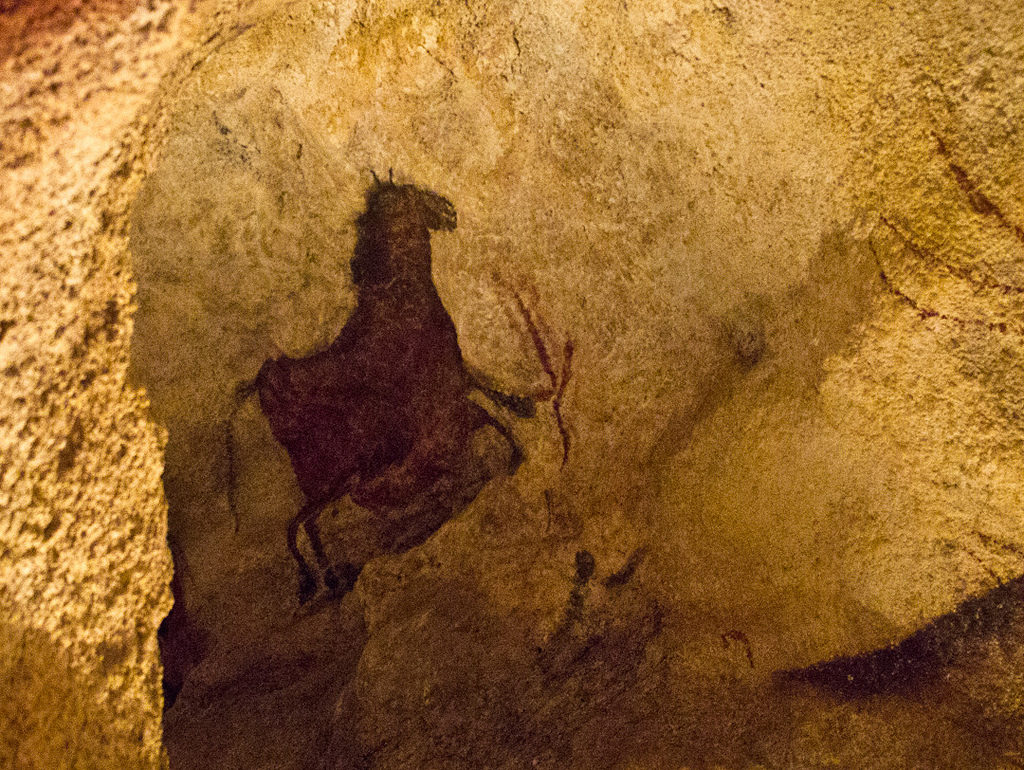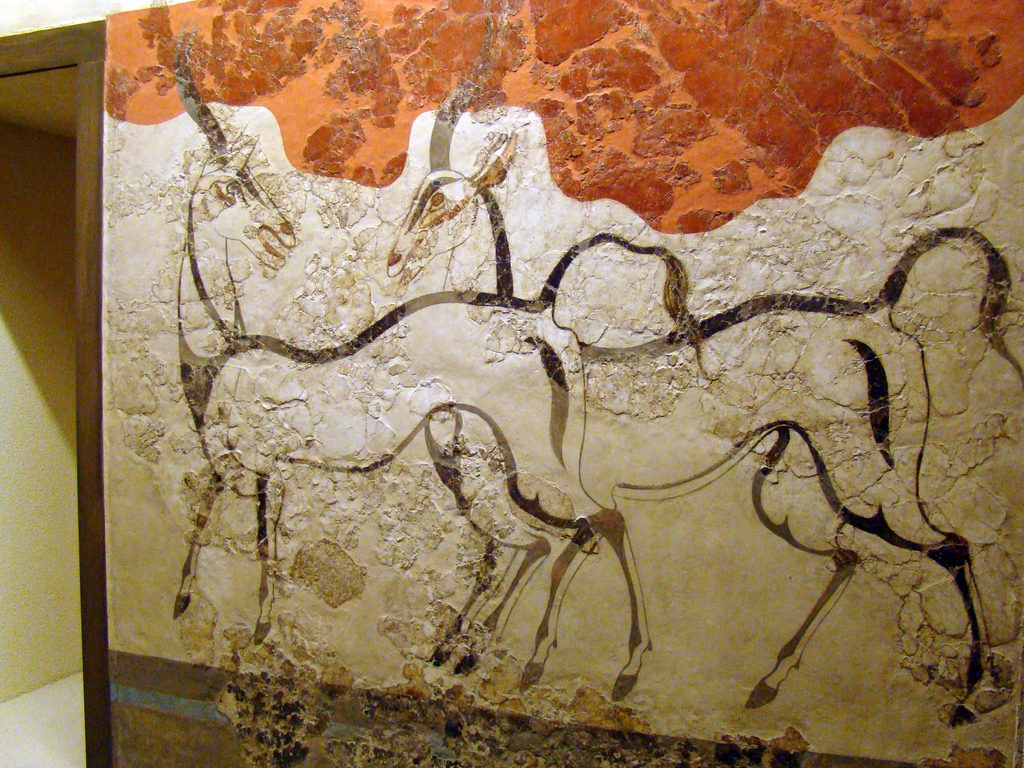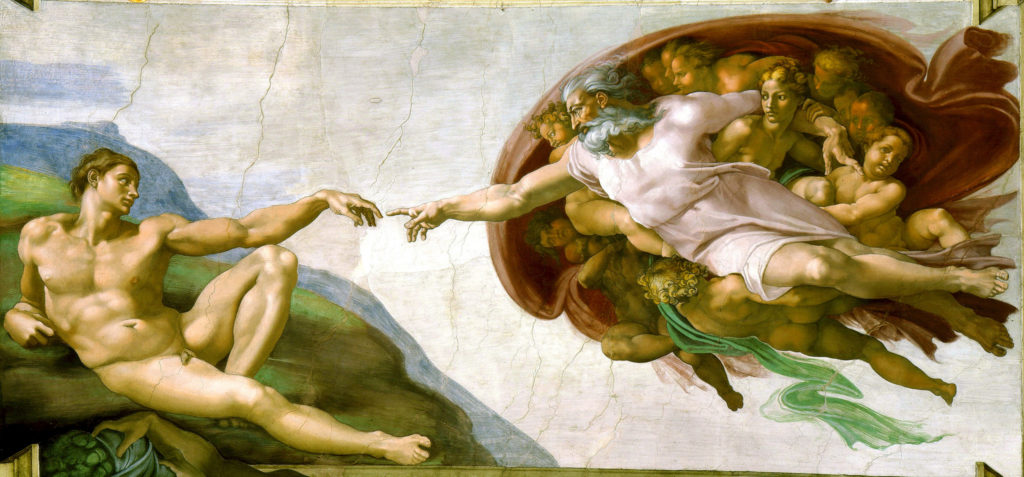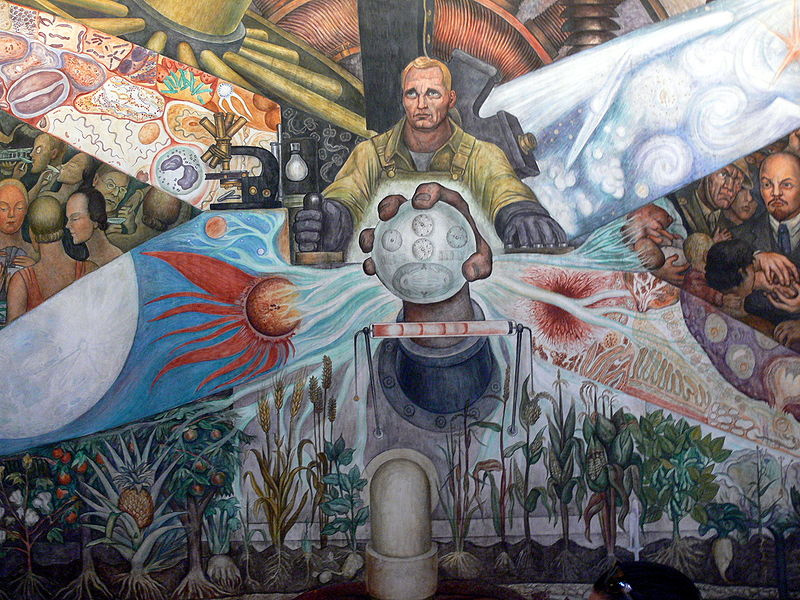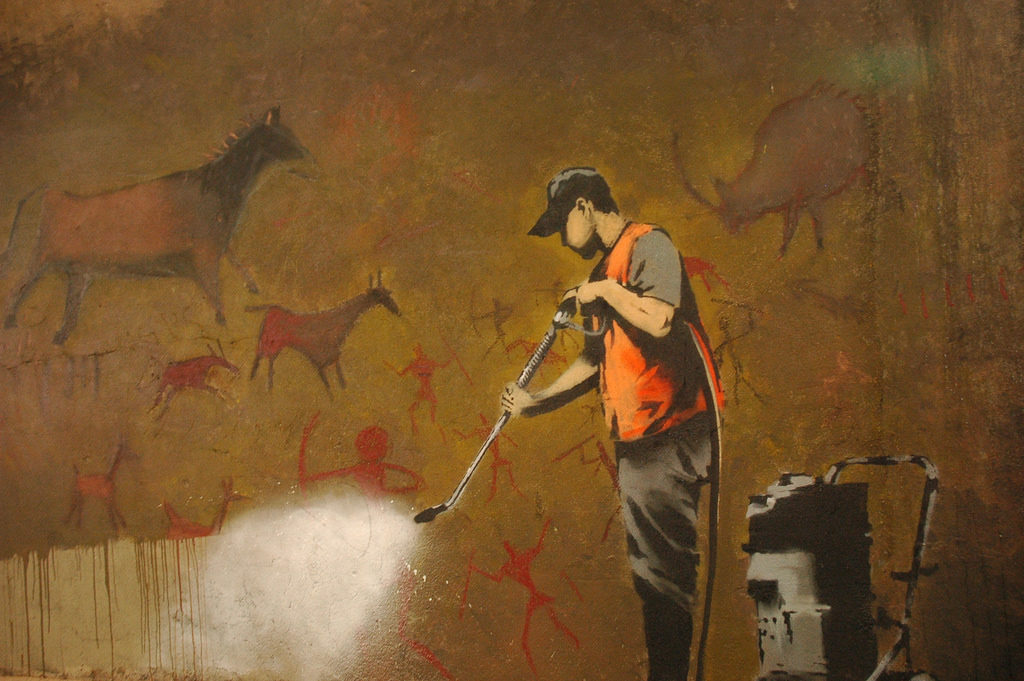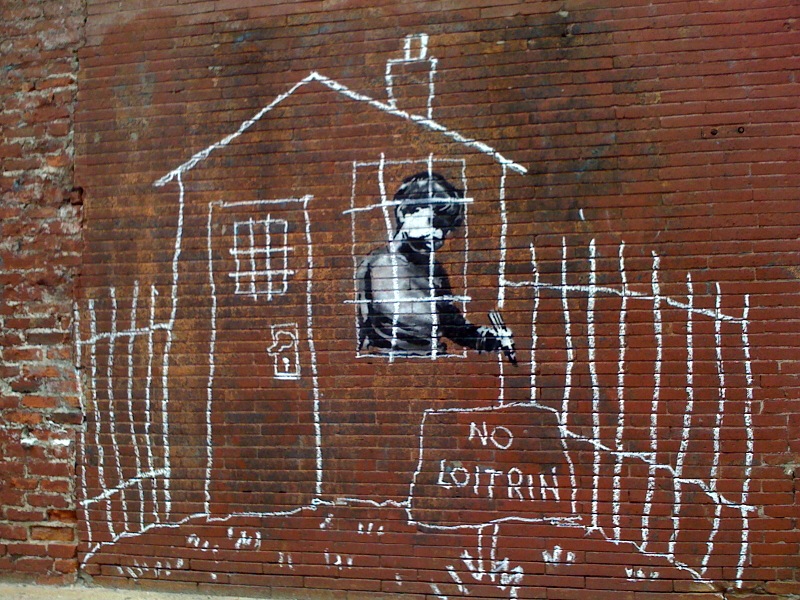As a species we have always found a blank wall thoroughly enticing. The urge to leave our mark on it is irresistible – ask any two-year-old with a crayon. It’s about expressing ourselves, commenting on the world as we find it, our life as we’re living it and maybe, it’s about attempting to change it all. Or…it’s just about decorating our space and making it more interesting.
Cave Paintings – Lascaux, France – 15,000 BC.
We don’t need to travel far for the first example – geographically that is – just to the south of France, but time-wise we have to journey back about 17,300 years to the Palaeolithic era. There are many examples of intriguing cave paintings, but the ones in Lascaux are my favourite. The animals are depicted with amazing delicacy and accuracy – the curves of their bellies, the subtle shading, and the illusion of movement as they appear to herd across the cave walls – it’s remarkable that they were created so very long ago.
Akrotiri Frescos – Santorini, Greece – 1627 BC.
Many thousands of years later, but still in pre-history, on a small Aegean island, a massive volcanic eruption put an end to a sophisticated civilization. The volcanic ash and debris preserved the multi-story dwellings and their beautifully decorated walls – animals, vegetation and people all executed in amazingly bright colors. One of my favorites is the fresco of the saffron gatherers – two lovely young women in a field of crocuses. Their intricate hairdos, hoop earrings, bangles and tasselled gowns are truly a marvel and this was all before 1627 BC when the eruption occurred.
House of the Golden Bracelet Garden Fresco – Pompeii, Italy – 79
We leave Santorini and prehistory behind us and move across the Mediterranean to another city destroyed by a volcano. Mount Vesuvius put an end to life in the prosperous city of Pompeii in 79 AD. Among the many secrets revealed by excavations were murals depicting the life of its people. One of my favorites is in the House of the Golden Bracelet. A blue sky with theater masks hanging above an overflowing garden with recognizably the same plants you might see in your own garden today. I love the marble birdbath and the charmingly rendered birds, but especially the smiling cat hiding in the undergrowth. It’s sad to think this paradise was so abruptly ended.
Deësis Mosaic – Istanbul, Turkey – 1261
Moving East and another thousand years forward, you’ll find the mother of all churches, Hagia Sofia in Istanbul. This next painting is actually a mosaic. The church’s fabulous golden mosaics spent almost five centuries under plaster while it was used as a mosque. In 1935 it became a museum and they again saw the light of day. The best of all is the badly damaged Deësis mosaic that dates back to 1261 AD. The work is so precise that the detail rivals any painting. The central figure of Christ has the distinctive seriousness of all Byzantine iconography, and yet his large liquid eyes are filled with such sorrow and compassion that it is incredible to think it is made up of thousands of colored glass pieces.
The Creation of Adam – Vatican City – 1512
The Italian Renaissance was when fresco painting reached a peak of both popularity and artistry. The most famous of all frescos are those painted by Michelangelo on the ceiling of the Sistine chapel. Millions of people visit every year and perhaps the most celebrated painting is that of God reaching across space to touch the outstretched hand of Adam. It is so well-known that it is possibly the most copied and parodied artwork in the world. And yet, if one looks at it with an unjaded eye there is no denying its power and artistry. The strength and muscularity of the figures and the liveliness of the movement make that small space between the fingers of God and Adam almost visibly spark with energy.
Apotheosis of Charles VI – Krems, Austria – 1739
Next, let’s visit Göttweig Abbey in Austria where in 1739, Paul Troger painted a ceiling showing the apotheosis of Emperor Charles VI in a remarkable palette of pastels – blue skies, fluffy clouds, elegantly robed ladies, the shining emperor riding supreme on a golden chariot and a host of chubby cherubs blowing bugles and scattering flowers. The glorious and decorative Baroque style is brilliantly executed, but it’s not all flowers and rainbows if one looks at the figure of the devil being expelled from this paradise. The sheer force of the figure, almost reminiscent of Michelangelo, is so clearly at odds with the sugary perfection of the painting.
Man, Controller of the Universe – Mexico City, Mexico – 1934
Another leap forward in time takes us to the twentieth century and the Palacio de Bellas Artes in Mexico City. Diego Rivera, a renowned fresco painter in his day, originally painted “Man at Crossroads” in New York’s Rockefeller Centre. However, because of his refusal to paint out Lenin, Rivera was paid in full and dismissed of his work before he could finish the painting. Although the painting was destroyed he was able to recreate it at a smaller scale in Mexico and renamed it “Man, Controller of the Universe.” The painting was a complex composition of the modern world as he saw it – agriculture, science, space, machines, wars, high society, athleticism, workers’ movements, and, of course, Lenin, all being controlled by a large, blond, decidedly Arian male. Interesting considering what was brewing in the world during 1934.
Banksy Graffiti – Globally – 21st Century
Today, the most exciting paintings are out in the streets. Graffiti is by no means universally accepted as art – hard to make a case for most of it – yet some is indeed brilliant. Though it’s labelled ‘vandalism’ by most authorities, I’d like us to keep an open mind and take a look at a graffiti artist known as Banksy. Based in the UK, but working internationally (using stencils for speed), his work is satirical, political and full of grim humor. It has been known to sell at auctions for extraordinarily high figures.
I’ve chosen two that wrap up our travels quite nicely. The first, “Cave Painting,” includes some of the Lascaux animals being erased by a street cleaner. The suggestions are clear. The next, “No Loitrin” shows a toddler drawing on a wall, which brings us back to where we started and our seemingly innate desire to leave our mark on a blank surface. So much street art is transient due to a perpetual fight with authorities, but there is a great deal of wit and talent out there. Be sure to look out for it during your travels.
Related articles

